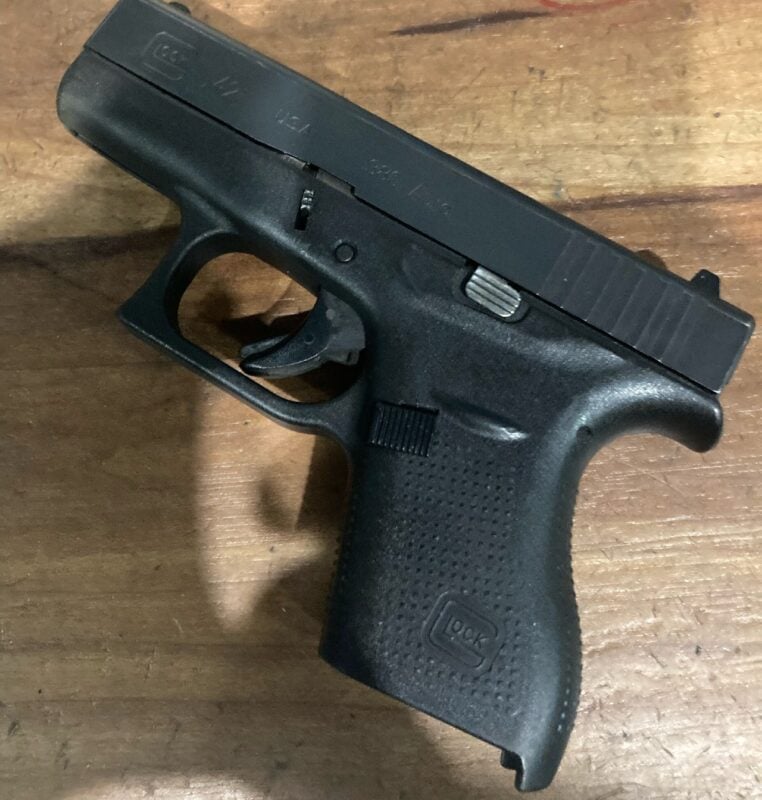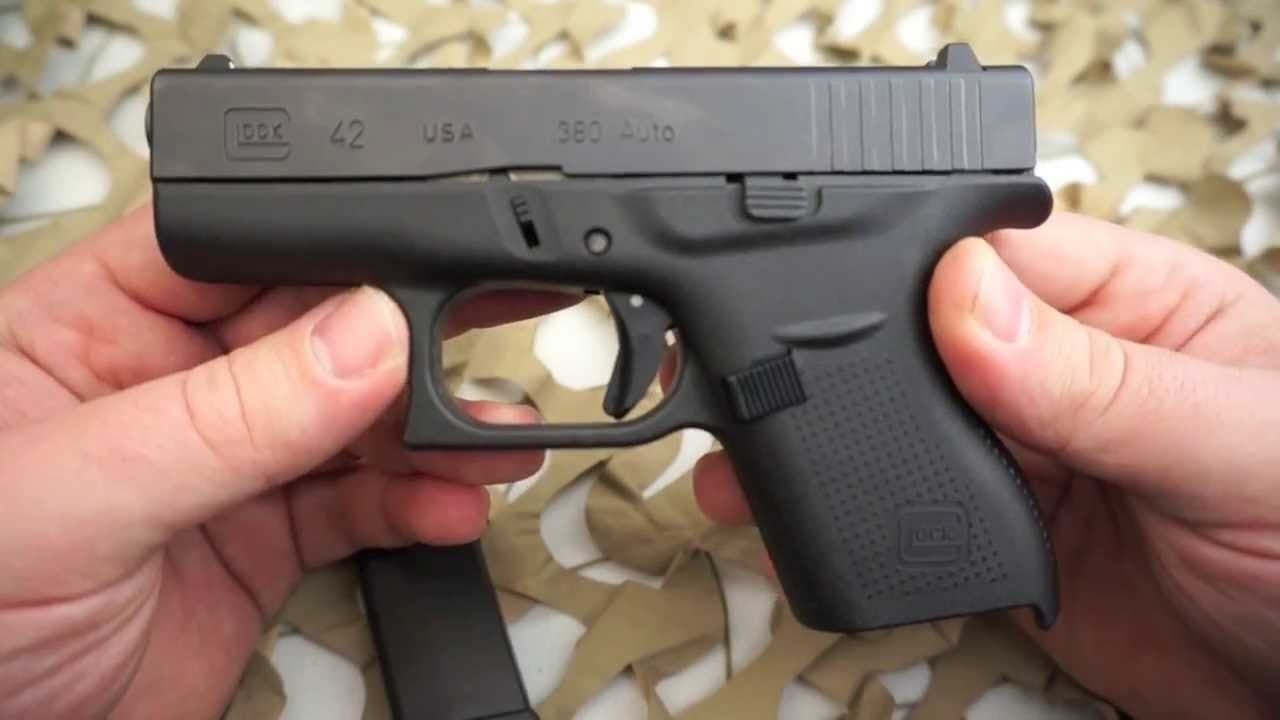Last week, when I wrote my piece on the top five .380 ACP guns on the planet, I included the Glock 42. I also conceded that, despite all my shooting experience with larger-caliber Glocks, “I’ve yet to fire the Glock 42,” hastening to add that “I plan to rectify that within the next 24 to 48 hours after I finish writing this article!”
Well, promises made, promises kept. It was indeed one day after the article was published that I found out firsthand how Glock’s .380 ACP offering compares to its larger sisters. Before that discussion, we need a little background.
Glock 42 Early History and Specifications
After many years of making guns in more powerful calibers, the G42, debuting in 2014, was Glock’s first entry into the so-called pocket pistol market — or “mouse guns,” as big-bore cultists derisively call them. In the manufacturer’s own words: “The G42 packs all the features GLOCK customers have come to appreciate – from the GLOCK SAFE ACTION system with its multiple integrated safety features to the brand’s proven reliability and durability.”
The G42 has a magazine capacity of 6 rounds, just like with the G36 .45 “baby Glock,” which gives you no real advantage over a snubby revolver unless you top off — that is, load to full capacity with that seventh round in the chamber. However, it does give you the advantages of higher hit potential due to the shorter, lighter trigger stroke, as well as a flatter profile, which makes for more comfortable concealment, and faster reloads thanks to magazine feed.
Specifications include a barrel length of 3.25 inches, an overall length of 5.94 inches, a width of 0.98 inches, an empty weight of 12.17 ounces, and a fully loaded weight of 15.87 ounces. (Contrast that weight with the 39 ounces of an M1911 .45 ACP.)
Personal Shooting Impressions/Range Report
Okay then, onto the really fun part: the live-fire session. This past Saturday, I was off to the top-notch Silver Eagle Group indoor shooting facility in Ashburn, Virginia, to take advantage of their rental Gen4 Glock 42.
The ergonomics on the gun were amazing, especially where the slide stop lever and magazine release were in relation to the thumb of my firing hand. I had never seen such a short and super-slim Glock up close. Sure, I’ve owned and fired my fair share of “baby Glocks” such as the 9mm G26 and aforementioned G36, but even those looked like steroid freaks compared to the G42.
For ammo, I used 50 rounds of Federal American Eagle 95-grain full metal jacket “hardball.” Course of fire was divvied up as follows: Fifteen head shots at 21 feet; 10 torso shots at 50 feet; 15 head shots at 75 feet; and 10 head shots at 150 feet. I fired at the ICE-QT paper target.
At all distances, my shots were consistently printing to the left. At 150, they’re not even worth mentioning.
Yeah, I know, pocket pistols like this aren’t really meant for 50-yard engagements, but I just couldn’t resist the temptation to test the gun’s long-distance dialing abilities. Plus I was remembering the Chuck Taylor standard: “If your handgun possesses enough accuracy to hit a man in the chest at 50 meters, then you have more accuracy than you probably will ever need!” The late Chuck Karwan — who like Chuck Taylor was a Green Beret in Vietnam — echoed the 50-meter/50-yard torso hit accuracy criteria for handguns.
That said, all 7-yard head shots connected. At 50 feet, they all stayed in the 5-zone of the target, with two landing in the tie-breaking 5x-ring, and the rest straying low left. At 75 feet, three rounds stayed in the noggin, one clipped the right ear, one hit the shoulder, and five were total whiffs. At the maximum distance, I did manage to get three hits in the 5-zone, but that’s about the only good thing I can say. Those three measly hits were spaced way too far apart to be considered a decent shot group.

Glock 42. Image provided by the author.
Trigger pull was a bit stiffer than expected, but then again, I have admittedly been spoiled by the aftermarket 3.5-lb. trigger connector on my personal Glocks. Recoil and muzzle flip were quite pleasant. Not that the .380 ACP is a hard kicker by any means, but the Glock 42 felt less snappy than, say, a Walther PPK in the same caliber.
A Shooting Buddy’s Impressions
Meanwhile, for what it’s worth, my good friend Ike “Itshak” Sarfati, an Israel Defense Forces combat veteran I previously interviewed for my 19FortyFive article on the Uzi submachine gun, had this brief comment on the G42: “I have owned the SIG 232, Walther PPK, and shot the Glock 42…the Glock 42 is a gun I would buy without hesitation.”
Want Your Own?
Guns.Com has a full page of G42s for sale, starting at $399.99, with most hovering in the mid-400- to mid-500-dollar range, and one selling at $917.99 thanks to a fancy American flag engraving on the slide. According to True Gun Value, “A GLOCK 42 pistol is currently worth an average price of $459.51 new and $330.73 used. The 12-month average price is $445.96 new and $330.73 used.”
MORE: The F-35 Now Comes in Beast Mode
MORE: Why the U.S. Navy Tried to Sink Their Own Aircraft Carrier
Christian D. Orr has 33 years of shooting experience, starting at the tender age of 14. His marksmanship accomplishments include: the Air Force Small Arms Ribbon w/one device (for M16A2 rifle and M9 pistol); Pistol Expert Ratings from U.S. Customs & Border Protection (CBP), Immigration & Customs Enforcement (ICE), and the Federal Law Enforcement Training Center (FLETC) Criminal Investigator Training Program (CITP); multiple medals and trophies via the Glock Sport Shooting Foundation (GSSF) and the Nevada Police & Fires Games (NPAF). Chris has been an NRA Certified Basic Pistol Instructor since 2011.

